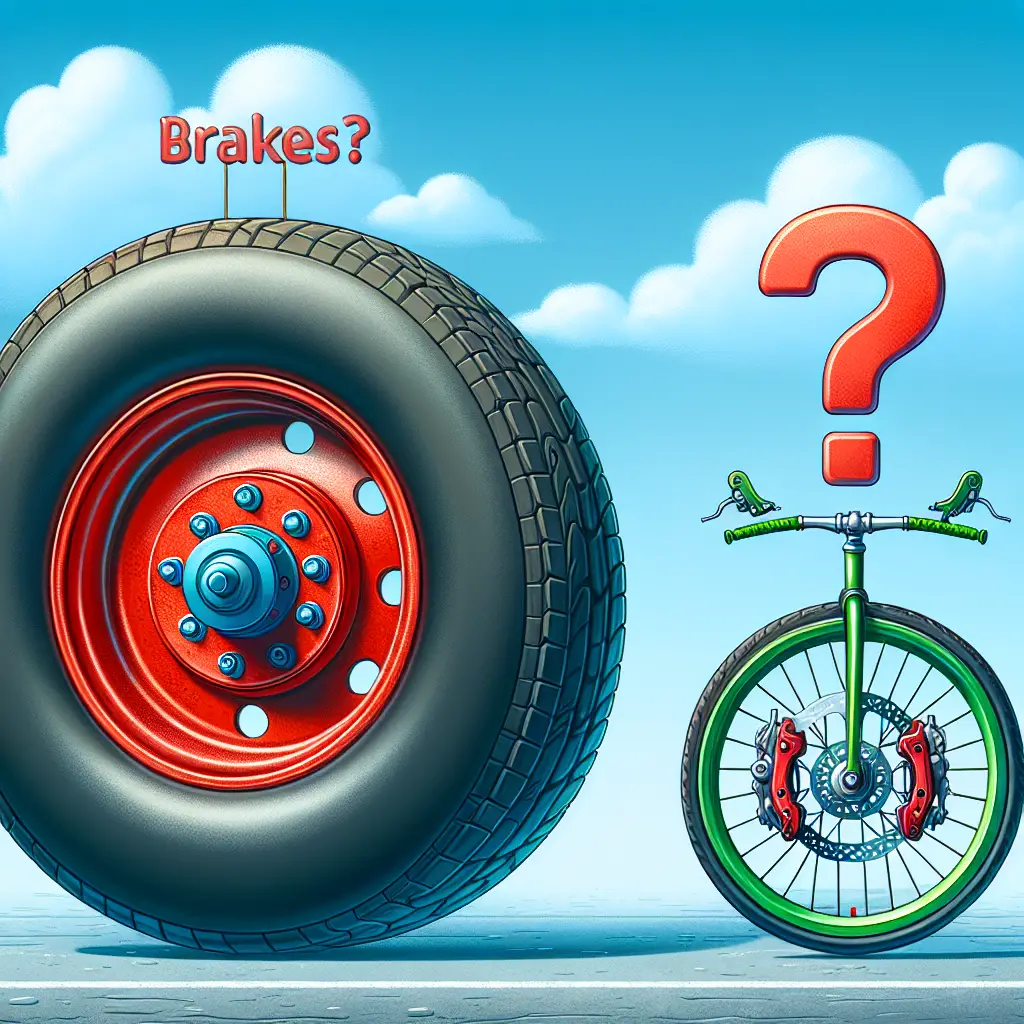Do I Need Bigger Brakes for Bigger Tires?
As you embark on your journey to upgrade your vehicle, you may find yourself asking an all-too-common question amongst automotive enthusiasts: do I need bigger brakes for bigger tires? Tackling this query requires a dive into the functionality of braking systems, the demands larger tires place on your vehicle, and the impact on overall safety. So, buckle up as we explore the ins and outs of brakes and tires, ensuring your ride is not only stylish but also safe and sound.
Understanding the Basics of Brakes and Tires
Firstly, it’s crucial to grasp the basics of how brakes and tires work together. The brake system in your vehicle is designed to slow down and stop your car through friction. This friction is applied by the brake pads clamping onto the brake rotors, which are connected to the wheels. Tires, on the other hand, are your vehicle’s only point of contact with the road and play a pivotal role in braking efficiency.
When you opt for bigger tires, you’re essentially increasing the diameter and possibly the weight of the wheel-tire combination. Larger tires can give your vehicle a more aggressive stance and potentially better traction and handling. However, these changes also alter the dynamics of your vehicle’s braking capability.
The Relationship Between Tire Size and Braking
So, why might bigger brakes be necessary when you fit larger tires? The answer lies in the physics of stopping distance and brake system load. Larger tires mean more rotational mass, which requires more braking force to slow down or stop. This is not dissimilar to how a heavier vehicle generally requires more robust brakes than a lighter one.
Moreover, the increased diameter of larger tires can change the mechanical leverage — referred to as the brake torque — that is applied to the wheel. To put this simply, when you increase the tire size, you might diluted the effective torque per inch of the tire’s radius, making it harder for the same-sized brakes to slow down the vehicle. This change in dynamics can lead to longer stopping distances and, in some cases, increased strain on your brake system, which could result in premature wear or even brake failure.
When Bigger Brakes Become Essential
It’s not always cut and dry when it comes to determining the need for larger brakes when fitting larger tires. However, there are specific scenarios where an upgrade becomes more critical:
- Heavy Vehicle Loads: If your vehicle frequently carries heavy loads or is used for towing, larger brakes can provide the additional stopping power necessary to handle the extra weight.
-
High-Performance Driving: For those who are into spirited driving or off-roading, the improved stopping power of larger brakes can offer better control and safety.
-
Significant Increase in Tire Size: A slight increase in tire size may not necessitate a brake upgrade, but if the tire size increases substantially, it’s recommended to consider larger brakes to maintain optimal stopping distance and safety.
-
Brake Fade: If you experience brake fade, where the brakes become less effective due to overheating, an upgrade to larger brakes can help dissipate heat more efficiently.
Making the Decision
Before you make any modifications, it’s important to consult with automotive professionals and conduct thorough research. Websites such as Tire Rack can provide insight into tire sizes and their impact on vehicle performance. For brake components, you might turn to authoritative industry resources like SEMA or consult with manufacturers directly.
Also, keep in mind local laws and regulations regarding vehicle modifications. It’s essential to ensure that any changes made to your vehicle are in compliance with legal standards to avoid potential issues on the road.
The Installation Process
Upgrading to bigger brakes is not just a matter of purchasing larger calipers and rotors. You must also consider the compatibility with your vehicle’s existing brake system, wheel fitment, and the need for additional components such as brake lines or master cylinders. It’s a complex process that often requires professional installation.
If you’re not mechanically inclined or simply want to ensure the job is done correctly, local automotive performance shops can provide the service you need. It’s also worth researching online forums and communities specific to your vehicle make and model, as they often house troves of knowledge and experience from like-minded enthusiasts.
Conclusion
In summary, bigger tires can indeed demand larger brakes, but it’s not always a straightforward necessity. The decision hinges on various factors like driving style, vehicle use, and the extent of the tire size increase. Upgrading your braking system does not just enhance performance but paramountly bolsters safety – ensuring that as your tires cover more ground, your brakes can bring you to a halt effectively.
Remember, vehicle modifications should always prioritize safety and compliance with the law. Proper research, professional advice, and the right installation are the cornerstones of successfully enhancing your vehicle’s performance. It’s a journey that, when embarked upon wisely, leads to a ride that’s as secure as it is impressive.
As an expert in automotive topics, I wish you safe travels on your journey to bigger tires – and potentially – bigger brakes. Keep in mind that like all components of your vehicle, brakes are crucial and should never be overlooked in the pursuit of aesthetic or performance improvements. It’s always better to err on the side of caution when it comes to modifications that can impact your vehicle’s safety on the road.

